Tata Punch EV review: Feels like a mini-Nexon EV
The Punch makes the transition to electric power, with two electric motor options, fresh styling and lots of features at a compelling price.
Published on Jan 23, 2024 08:45:00 PM
53,405 Views
Follow us on
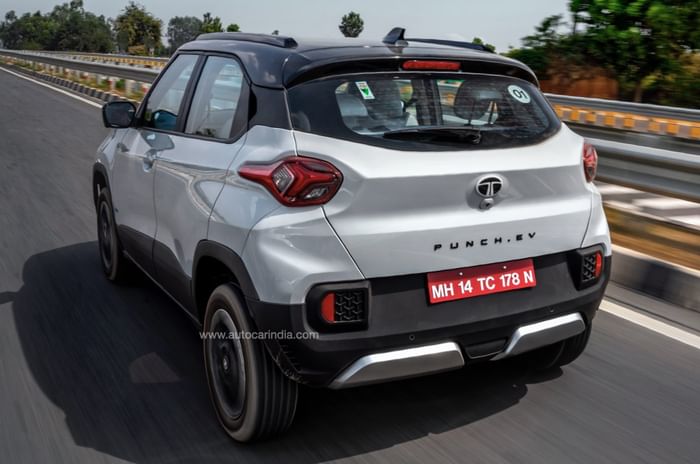
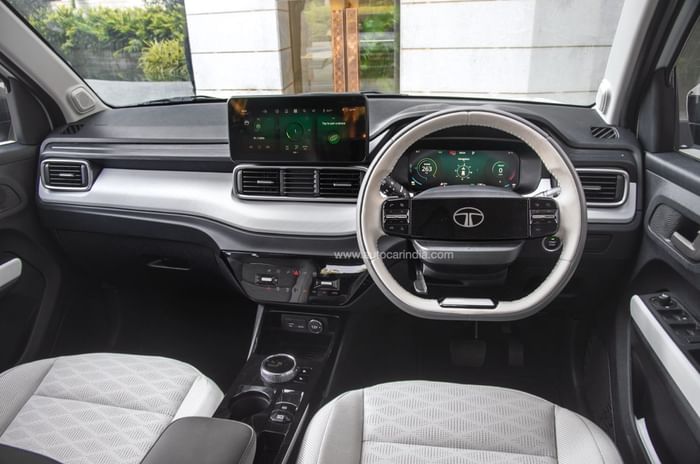

We Like
- Loaded with features
- Comfortable ride
- Strong performance
We Don't Like
- Fiddly drive controller
- Cramped rear seat
- No spare tyre
Tata Motors is poised to further solidify its dominance in the Indian passenger EV market with the introduction of the all-new Punch EV that neatly slots in between the range-topping Nexon EV and the entry-level Tiago EV. The Punch EV is Tata’s fourth electric offering, but crucially, it’s got the potential to become India’s bestselling EV. Why? For one, it’s an SUV – the body style that everyone is in love with – it’s based on the wildly popular petrol-engine Punch, it's superbly specced, aggressively priced (Rs 10.99 lakh-15.49 lakh), and has absolutely no direct competition. On paper, the Punch EV seems a sure-shot winner, but is it as impressive on the road?
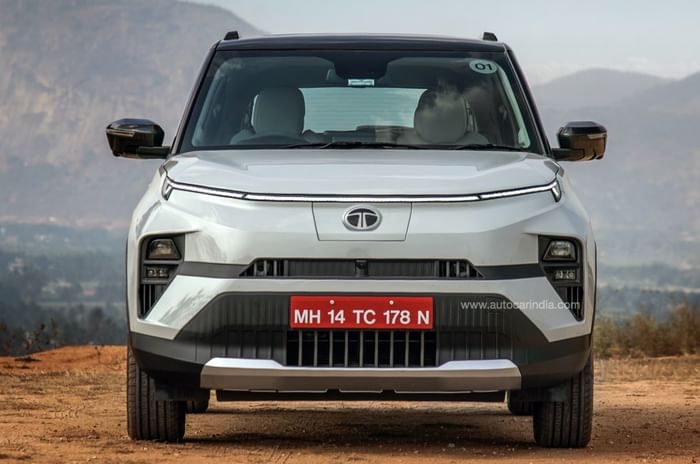
Tata Punch EV platform
Tata Motors has applied the same Nexon electrification formula to the Punch, which is to take the ICE version, give it a new and distinctly EV face, and pack it with more features and tech. But there is one big difference: the Punch EV is the first Tata to be built on the company’s Acti.ev architecture, a comprehensive re-engineering of the original ICE platform for pure EV application. Unlike the Nexon EV’s ICE platform, which underwent smaller modifications in the interest of getting to market quickly, the Punch EV gets a far more comprehensive do-over. Tata Motors has reengineered the floor to make it flat and has given it a wider recess to accommodate the centrally mounted battery pack. While in many cases an underslung battery lowers ground clearance, with the electric Punch it is higher. Tata engineers have raised the floor (by 20mm), so ground clearance stands at speedbreaker-conquering 190mm – up 3mm from the ICE Punch.
Another big advantage of the new Acti.ev architecture is that the battery pack itself acts as a stressed member and contributes to the torsional stiffness of the chassis, which, in the case of the Punch EV, is 30 percent higher than the ICE model. A stiff and rigid chassis is always desirable because not only does it improve crashworthiness but it has also allowed for softer damper settings for improved ride comfort without compromising body control.
| Tata Punch EV Price, Mileage, Specifications, Features and Variants | |
|---|---|
| Brand | Tata |
| Model Name | Punch EV |
| Tata Punch EV Price | ₹ 12.76 - 17.34 lakh |
| Tata Punch EV Range/Mileage | Electric : 315 - 421km |
| Tata Punch EV Specifications | SUV | 5 doors | 5 seats View All Specs |
| Tata Punch EV Features | LED headlight | 10.24-inch Touchscreen display | 6 airbags View All Features |
| Tata Punch EV Variants | Smart | Smart+ | Adventure View All Variants |

The spring rates are a little stiffer than the ICE Punch to compensate for the increase in weight, which is 320kg in the case of the long-range version that has a kerb weight of 1,340kg. The standard model with the smaller and lighter battery pack is around 100kg lighter. The brakes have also been marginally improved with heavier-duty calipers and discs at the rear (drums on the 82hp version), but like with all EVs, the regeneration modes greatly assist in the overall braking performance
Tata Punch EV range, battery, charging
The Punch EV comes with two battery sizes – the standard variant gets a 25kWh pack, whilst the long-range version gets 35kWh. Tata Motors claims a range of 315km and 421km for the standard and long-range versions, respectively. With Punch EV’s Acti.ev architecture optimised for efficient packaging, you would have expected a bigger battery pack but the limitation here is the ICE version’s short 2,445mm wheelbase, which has a direct bearing on battery size. Also, the Punch EV uses the same cylindrical LFP cells as in the Nexon EV; these aren’t very space efficient but they are a tried-and-tested form and chemistry, and locally sourced too, making the battery pack – singularly the most expensive component of an EV – quite cost-effective.
The Punch gets a single CCS2 charging port, which is the industry standard. The company claims that on a DC fast charger, the battery can be topped up at a maximum speed of 25kW taking it from 10 percent to 80 percent in 56 minutes; not very fast by modern EV standards. You also get a 3.3kW portable charger – good for charging wherever you find a 15A plug or a 7.2kW AC fast charger that can be installed in your home or wherever you like.
Tata Punch EV design
The regular petrol Punch was quite a looker and the Punch EV looks even better. Design changes mainly are confined to the nose with the grille blanked out and the flap for the charging port smack in the middle. The charging port can only be opened via the release button on the centre console, which isn’t as convenient as having it on the key fob as well. The LED light strip that runs across the bonnet is the new signature for all Tata EVs and looks quite distinctive as does the headlamp cluster housings that stick out from the lower sides of the front bumper. The deep chin has an air intake and a scuff plate completes what is a very prominent face. In fact, the nose is not too dissimilar from the Nexon EV, which uses similar design cues.
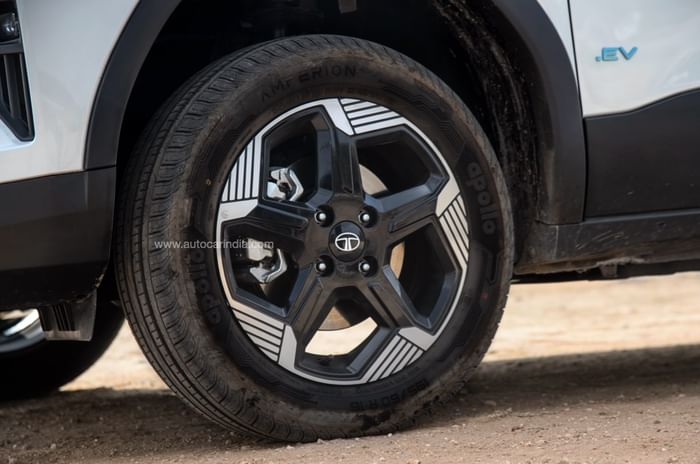
From the side, there’s no change and the sculpted flanks, high beltline and pillar-mounted rear door handle are all carried over. Tyre size, too, is the same as the petrol, the Punch EV rides on 16-inch wheels (15-inch ones for lower variants), which look a bit lost within the hefty wheel arches.
The rear is also heavily sculpted and the tail-lights with arrow-like elements is another design touch that distinguishes the Punch. And if a green registration plate is not enough to shout out its EV credentials, Tata Motors has the Punch EV name boldly lettered across the tailgate.
Tata Punch EV interior, features
Taking centre stage in the cabin are two 10.2-inch screens, which are packed with features and tech. The central infotainment screen hosts the Arcade.ev suite of 17 apps, which includes Amazon, music, games, podcasts and OTT streaming. You also get wireless Apple CarPlay and Android Auto, as well as wireless phone charging, of course.
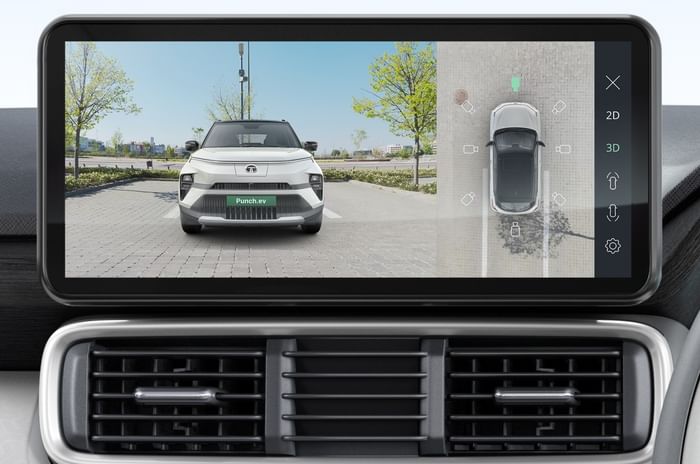
The digital instrument cluster, too, is highly configurable and there’s no dearth of information, which includes info from your connected phone, navigation and also driving info like a histogram showing you the car's power flow. The only trouble here is some of the graphics like the power flow animation are way too small to see easily.
The top-end Empowered+ variant gets equipment you find only in cars a segment or two higher, like a crisp 360-degree camera, blindspot monitoring, leatherette seats, which are cooled, an electronic parking brake with auto hold, an air purifier, auto wipers and an auto-dimming rear view. There’s also a ‘Hey Tata’ voice assistant configured to take over 200 voice commands in six languages and the Alexa, Siri and Google assistants too.
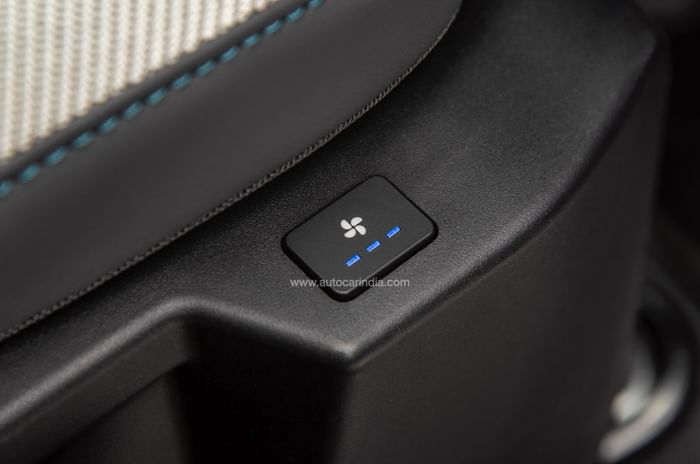
In fact, the Punch EV is as well as equipped as the Nexon EV and only a few features are missing like V2V and V2L charging, and configurable ambient lighting. The layered dashboard looks solid and the switches and buttons have a nice heft to them but look closely and you’ll find lots of iffy bits. The plastic quality isn’t great and neither is the finish of the excessively used piano black finish, which is prone to attracting smudges, dust and eventually, scratches.
The touch-sensitive buttons on the all-black lower console are not well-defined and to operate some of them takes your eyes off the road. However, the biggest bugbear continues to be the rotary drive controller, which is infuriatingly slow to respond and sometimes doesn’t engage if you don’t have a firm foot on the brake pedal.
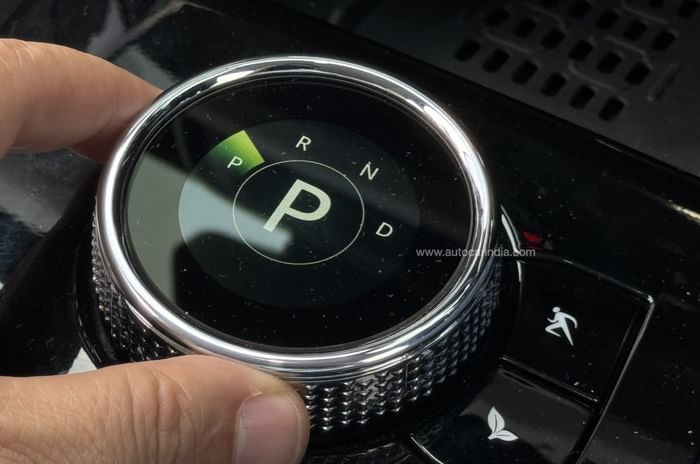
Tata Punch EV interior space, comfort
The Punch is a compact compact SUV in the sense that it sits in a segment below the Nexon. Just 3,857mm long and 1,742mm wide, the cabin is expectedly snug but Tata Motors has done an outstanding job of making the seats very comfortable. The front buckets are generous even for 6-footers and the rear seat too is particularly well-shaped with terrific under-thigh support thanks to a generous squab and a high-seating position, which compensates for the raised floor. As a result, you don’t sit in that typical ‘knees-up’ position you experience in most EVs. The trade-off is reduced headroom due to the increased seat height, and this issue is exacerbated in the sunroof-equipped cars, which have lower roof liners. Legroom, too, is in short supply and, as a result, the rear seat is best only for short people.
The 366-litre boot is quite generous and deep enough to stack in two large bags, but there’s no spare tyre and whatever little storage space there is under the boot floor is used for the charging cable, puncture repair kit and tools. There is a small frunk, too, which should have ideally housed the charging cable but you can use it to store some additional small items.
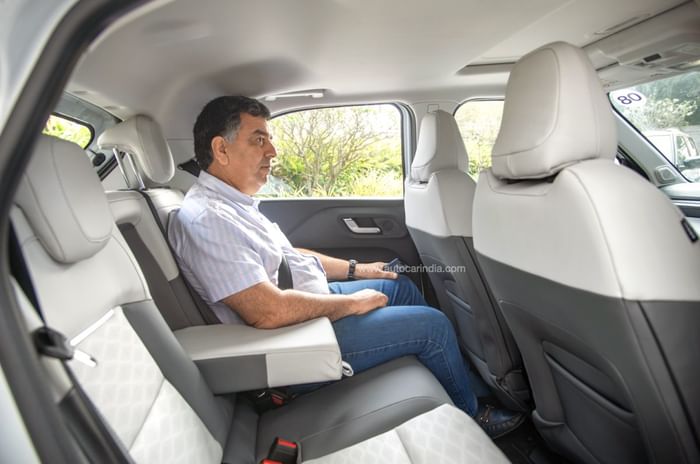
Tata Punch EV performance, ride and handling
Tata Motors euphoric rise in the Indian EV market has masked to a great extent its one big weakness – internal combustion engines. And though the Punch, which sells around 14,000 units a month, defies that assumption, there’s no getting away from the fact that the very ordinary and underpowered 1.2 three-cylinder naturally aspirated petrol is the weakest point of the package. But now with the Punch EV, that weakness is not just gone in one fell swoop but is replaced with what has turned out to be this little SUV’s biggest strength – 122hp of strong, smooth, silent and seamless electric power. It’s the same motor as the Nexon EV’s, whilst the standard variant with the 25kWh battery gets a less powerful 82hp motor.
The Punch EV gets off the line with ease and effortlessness that defines the electric breed. It gathers pace progressively and rapidly and you’re never left wanting for more power. You get three driving modes – Sport, City and Eco – each of which is mapped and calibrated to suit different driving styles and requirements. Sport mode, which shoves the Punch EV from 0-100kph in a claimed 9.5 seconds, is of course the most thrilling and the one to use when you want to have some fun. The Punch EV whisks you to some serious speeds without breaking a sweat or making a noise about it in true EV fashion. There are no jerks, no vibration and apart from a bit of road noise at high speeds, the cabin is pretty silent.
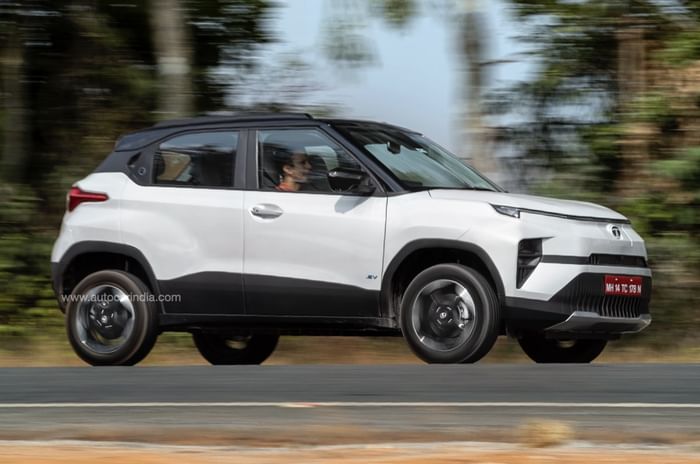
However, that instant response of maximum torque being unleashed from a standstill has been dialled down and that’s a shame because that neck-flexing thrust you get off the line every time you floor your right foot is what makes driving an EV addictive.
Tata Motors engineers say that have deliberately softened the response to make the power delivery more gradual, avoiding a sudden and potentially startling surge of power. While this may cater to the average driver's comfort, it does dilute the thrust that enthusiasts typically crave when accelerating in an electric vehicle. Despite having other modes suitable for everyday driving scenarios, the question arises: why compromise the intensity of Sport mode for a clique of enthusiasts who seek the maximum performance from their electric vehicles?
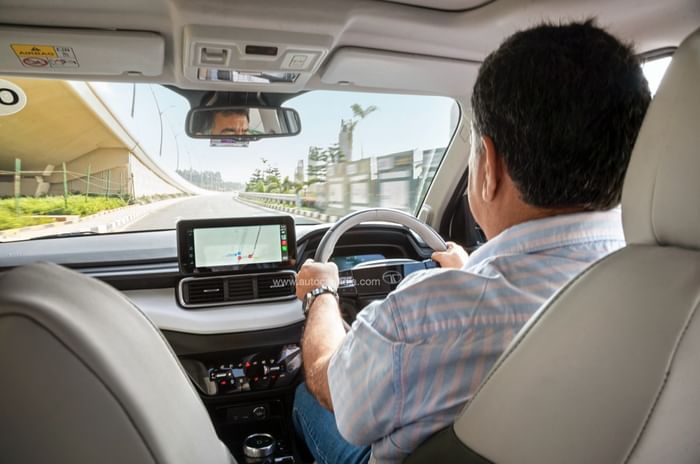
City mode, meanwhile, is perfect for ambling along in traffic and, quite frankly, the default mode owners will use for 90 percent of their time behind the wheel. Eco mode is not necessarily an emergency mode to give you vital extra kilometres of range when you’re low on charge. In fact, Eco too is quite useable in everyday traffic and it's only when you floor the pedal that you feel a distinct lack of grunt. We feel with the presence of three driving modes, Tata could have kept a more lively tune for Sport mode.
The four levels of regenerative braking are better defined in that sense which can be easily adjusted via the steering paddles. Level 0 has no regeneration and feels the most natural when you coast. Level 3 or maximum regeneration is pretty aggressive and gives 0.18g of deceleration, which in traffic is good for one-pedal driving but the in-built creep function means you will have to use the brakes to bring the car to a complete stop.
Ride comfort is an area where the Punch EV has nailed it. The softer dampers have made the ride more pliant and supple and the Punch EV soaks up the worst of roads with the authority of a much bigger SUV. At low speeds, sharp edges do thud through but that’s more a function of the 195/60 R 16 tyre sidewalls that take the impact. The higher profile 185/70 R 15 tyres on 15-inch rims fitted on the lower-spec cars should actually be more comfortable.
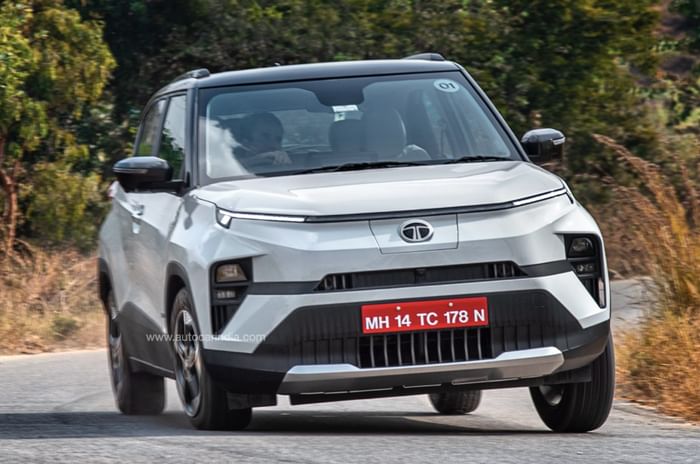
Straight-line stability again is very good and even through long, sweeping corners, the Punch EV feels nicely bolted to the tarmac. There is a fair bit of body roll when you push the Punch EV hard through tight corners, but thanks to the lowered centre of gravity the heavy battery pack affords, the sense of stability and connection with the road is maintained.
The steering is light, though not very communicative and lacks the fluency you find in other Tata cars, especially the Nexon. You get a bit of torque steer under hard acceleration and there’s an inconsistent feel around the straight-ahead position. The brakes are pretty good and inspire confidence, though in the level 3 regen, you can feel the distinct transition from the regen braking of the motor to the mechanical friction of the brakes.
On a purpose-built track strewn with rocks, ditches and potholes, the Punch EV’s ground clearance and favourable angles of approach and departure were superbly highlighted. That it has genuine off-road capability is a bonus.
Tata Punch EV price, verdict
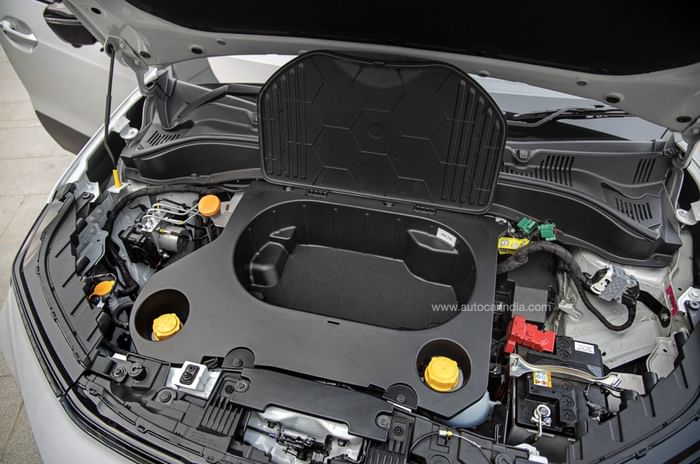
The Punch EV excels in its transition to electric power and as an urban runabout it’s hard to beat. It’s got all the ingredients, a strong motor to scoot through traffic, high ground clearance and a brilliant suspension to make the best of the worst roads in any city. The small footprint and high driving position make threading this compact SUV through traffic utterly easy. What’s not to like? The cabin has a few rough edges, some of the controls lack a bit of finesse, but the biggest weakness is the lack of space in the rear seat. As a family car for four or five adults, you may want to stretch for the bigger Nexon EV, but for the individual and as an urban runabout, the superbly equipped and superbly priced Punch EV has absolutely no competition. Tata Motors has knocked or rather punched this one clean out of the park.
Also see:
Tata Punch EV variant-wise features explained
Tech Specs 
Copyright (c) Autocar India. All rights reserved.






 Engine
Engine Acceleration
Acceleration Body
Body Brakes
Brakes Dimensions
Dimensions Range
Range
Comments
Member Login
Personal Details
SANJAY MUKHERJEE - 373 days ago
Can a spare wheel be kept under the boot ?